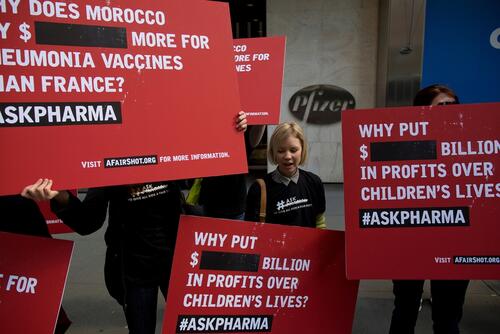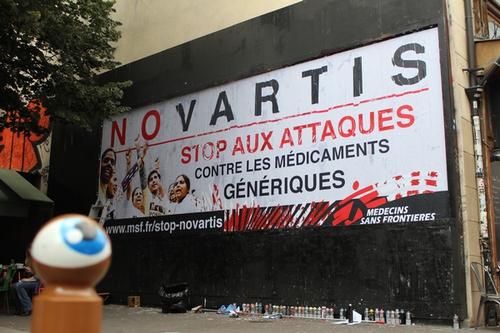For decades, the global pharmaceutical industry has spread a deceptive narrative justifying the ever-increasing, sky-high prices of drugs, vaccines and diagnostics as something necessary and inevitable.
MSF’s Access Campaign has repeatedly challenged this deadly narrative, calling for affordable access to lifesaving medicines, prioritisation of people’s health over profits, and transparency around the research and development (R&D) process.
Yet pharmaceutical corporations continue to perpetuate a series of myths about the development costs and pricing of medicines and other health products, in order to protect their profit-maximising practices – at the expense of people’s lives. One pharmaceutical financial investors’ report even went as far as to ask, “Is curing patients a sustainable business model?”<a href=https://www.cnbc.com/2018/04/11/goldman-asks-is-curing-patients-a-sustainable-business-model.html>Goldman Sachs asks in biotech research report: ‘Is curing patients a sustainable business model?’</a> CNBC, 11 April, 2018
Here are some of the industry’s dirty, not-so-little secrets they’d prefer you not know!
1. Developing drugs is not as expensive as they say
Big Pharma exaggerates the costs of R&D of new medicines to justify their high pricing, and often categorise ‘opportunity costs’ and non-research activities, such as the cost of buying another company, as R&D costs. While Big Pharma often says it costs US$2-3 billion to develop a new drug, other credible estimates are at least 10 times lower – in the $100-200 million range.

The Naked Truth about Big Pharma
2. You’re paying twice for your medicines
Corporations free-ride off public, taxpayer-funded research at government and university laboratories, from which most new drugs and health technologies originate. They get tax credits and other financial incentives to ‘de-risk’ their research investments, and privatise and patent the resulting products. Then they charge high prices to taxpayers and governments.
3. The pharma industry is poor at innovation
About two-thirds of the new drugs that arrive on the market are no better than what we already have. Pharma corporations put more effort into developing so-called ‘me-too drugs’ than finding true therapeutic breakthroughs.

Evergreening - sounds nice, doesn't it? But it's not...
4. Patents are extended – over and over – to prolong monopolies
A notorious pharma tactic is patent ‘evergreening’, where corporations file for additional patents on small changes to existing drugs, thereby lengthening their monopoly and blocking affordable generic products.
5. Pharma bullies developing countries for going against their corporate interests
Time and again, Big Pharma uses pressure tactics or oppressive legal actions against low- and middle-income countries like India, South Africa, Thailand, Brazil, Colombia and Malaysia for prioritising people’s health over pharma’s interests. Together with some wealthy countries, pharma tries hard to influence international trade rules to benefit themselves, even if it hurts public health.
6. Pharma pockets more than they re-invest
Big Pharma says they need huge profits so they can pay for R&D and innovation. But in reality, they spend more on share buybacks to boost their own stock prices, and on sales and marketing, than on R&D.





![Wishlist 2020 - FUTURE [Twitter version] Wishlist 2020 - FUTURE [Twitter version]](https://img.msf.org/Docs/MSF/Media/CMS3/0/9/8/6/MSF298431.jpg)

